We just finished another epic trip to Algonquin Provincial Park! It was a fly fishing guide vacation that included myself (Ryan Shea), Nate Carr, Tony Lohr (of 85th Day Angling), and Nick Sagnibene (of Adventure Bound on the Fly). We made the short drive north of the border to this little slice of musky heaven on a Friday and spent 5.5 days on the water. I usually don’t like to write about specific spots (I’m not going to disclose the river we fished) but I am confident that our fellow anglers won’t blow up this location – it’s logistically taxing to get to and fish. Unless your idea of a vacation is going to a location where there are no roads, no cell service, brutal portages, unpredictable weather, frigid nights, eating freeze-dried foods, and sleeping in the dirt in the quest to catch the fish of 10,000 casts, what will follow isn’t for you. However, I’m sure this description piqued your curiosity so hang in there – if for no other reason than to see some of the incredible pictures. Here is some guidance for a do it yourself (DIY) trip to Algonquin Provincial Park.
Planning is CRITICAL: Remember – your biggest constraint is space.
Sure, that’s a blinding statement of the obvious when preparing for any trip but in the case of an Algonquin adventure, your life depends on it. Think that’s dramatic? Picture this – you’ll spend at least 5 days on the water in a canoe. Once the shuttle drops you off and you push away from shore, you’re completely on your own. No roads, no way to call for help, no way to harvest food (unless extremely small bass make it on the menu). You’re out there…and it’s perfect! A little careful planning will ensure you have a great time and remain relatively comfortable. Just remember, your biggest constraint is space – everything you need to survive must fit in your canoe.

A quick view of the scenery and canoe set up

Short bank break. Take note of the canoe set up
Meals: Eat to survive while maintaining morale.
One thing that will take up a significant amount of room in your canoe is food. Plan your daily meals carefully but remember that everything must be shelf stable. There are numerous options available – from freeze-dried meals, to “just add water” food packets, to canned goods, to trail mix. Of utmost importance in planning for daily sustenance is to consider how active you’ll be once you’re out there. On a trip to Algonquin, someone will always be rowing. Someone will always be casting. You’ll have to hike for hundreds (sometimes thousands) of yards around rapids with a canoe on your shoulders and a large pack on your back. When you set up camp, there are tents/hammocks to set up, wood to harvest, fire to start, food to prepare, etc. In other words, you’ll be moving constantly and burning calories at a rapid rate – even more so if it’s cold – so make sure to include calorie rich foods but don’t be monotonous. A good variety will keep you focused, maintain morale, and sustain high energy levels.
Survival Equipment: A careful balance between safety, comfort, and cubic inches
Another large space consumer is the equipment you’ll need to survive. You’ll have to prepare meals, cut firewood, treat small (hopefully not big) injuries, purify water, start fires (maybe in wet conditions), etc. Like meals, there are numerous options available to accomplish these tasks. Stoves, small handsaws, fire-starter logs, knives, pots, pans, cooking utensils, headlamps, bug repellent, plates, sporks, aquatabs (to purify water), rope, and many lighters should make your packing list. I could get prescriptive here but some of this list depends on what food you plan on preparing.
You’ll also need safety equipment like a first aid kit, spare parts for your canoe, and personal floatation devices. The outfitter you choose can provide this for you – but I’ll discuss that later. Although Algonquin is breathtakingly beautiful, it can be a hostile place if you’re not prepared.
Clothing: Keep it simple, get used to being dirty, and dress for the occasion.
This is the hardest issue to discuss as it completely depends on when you plan on going up there. Anglers can go extremely light in the late spring and summer – shorts, wet wading shoes, and a couple of layers for cooler nights. Bugs will be your biggest obstacle this time of year – the black flies and mosquitoes are MISERABLE in Algonquin. Make sure you have bug nets and insect repellent.
If you make the trip in the fall, bugs will not be a problem but there are other obstacles to consider. Packing clothing for fall weather is far more complicated as the weather can change rapidly. Fall in Algonquin consists of cooler days and cold nights, which necessitate numerous layers and protection from the rain – getting wet is inevitable but getting soaked to the bone is miserable and potentially deadly. The biggest concern this time of year is hypothermia – it’ll ruin your day quickly if you start shivering as you’ll have to get off the water and build a fire, which takes up precious fishing time.
Regardless of the season, make sure you have at least one change of clothes in case you get wet as well as a warmer set of clothing to sleep in. Morale will increase exponentially in the evenings if you can change into warm, dry clothes as you settle in for a meal by the fire.
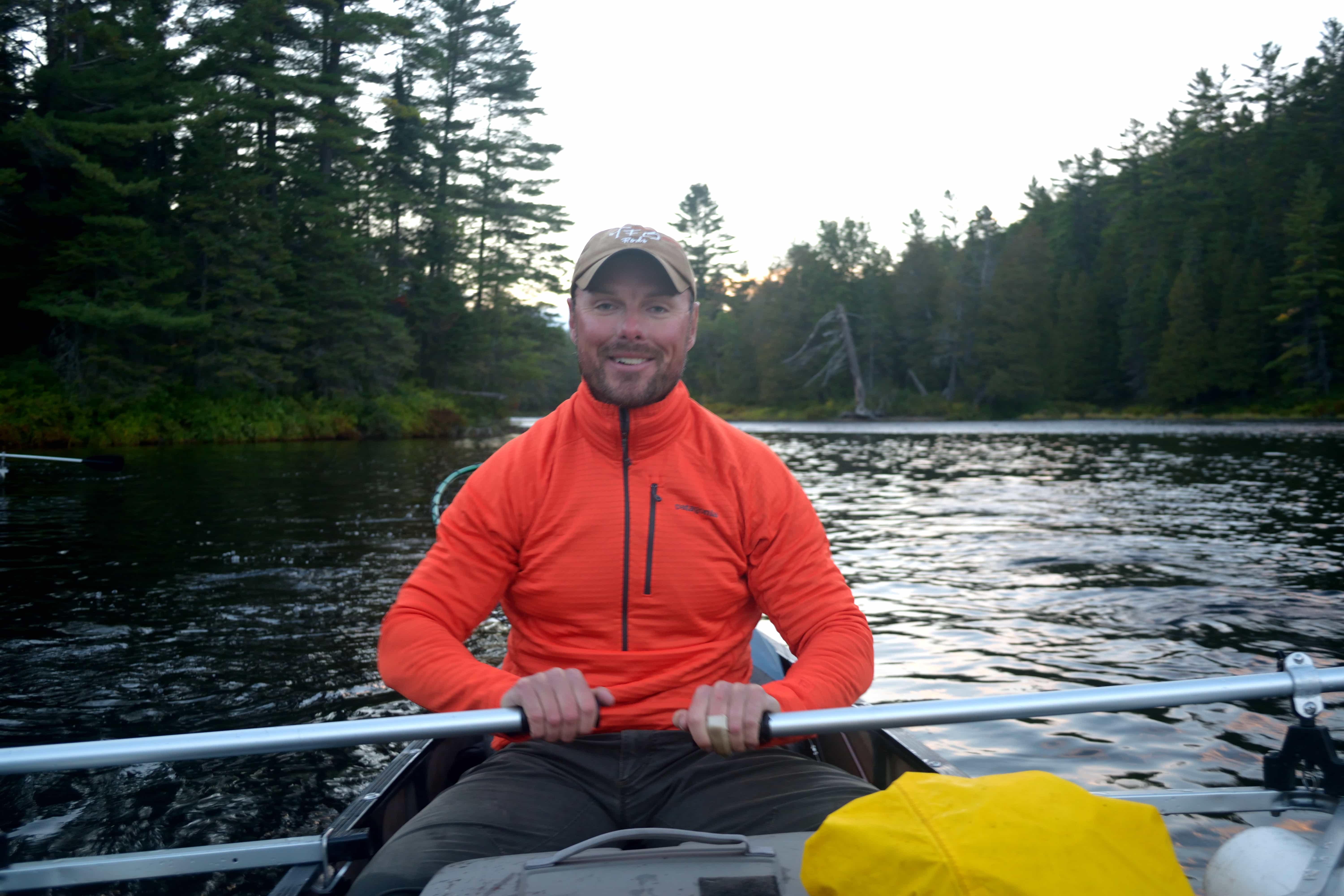
Happy as hell and dressed for the occasion. I was ready to experience the rising vibes of what was to be an evening frenzy.
Racking out: how to get a good night’s sleep in a primitive campsite
This section is simple – the most important item required here is a sleeping bag rated for the projected temperatures of the trip. Don’t be afraid to go bigger here – the better you sleep, the more focused and energized you’ll be on the water the next day. If the nights call for temps in the 30s, go with a 25 degree or 0 degree bag. If it’s going to be in the 60s, go with something that’ll keep you comfortable in the 50s.
For overhead cover and protection from the hard, rocky ground, you can go with either a tent/tarp and inflatable mattress set up or the leaner profile afforded by a hammock and rainfly set up. Both have pros and cons but I’ll say this much – make sure you practice setting up your hammock and rainfly prior to going up there. Let’s just say getting into your sleeping bag and remaining comfortable throughout the evening can be an exercise in futility if you aren’t used to hammock life.
Fishing Equipment: Few of these fish have ever seen a human let alone a fly – they aren’t picky feeders.
Under normal circumstances, I keep my fly selection simple – focusing on what fish are feeding on at the time. My Algonquin fly box is even sparser. The musky up there, if they are active, are anxious to kill anything that enters their zone so if it displaces enough water or makes enough noise, a fish will attack if there is one around – more to come on this topic. It’s always difficult to talk fly anglers off the ledge of having every fly imaginable at their disposal but I am serious when I tell you that all you’ll need is a small boat box with about a dozen 8-12in musky streamers of your favorite colors and a few big top water flies.
To get your flies out there, you’ll need 12wt rods with 450 grain sinking lines for streamers and 10wt rods with intermediate and floating lines for top water flies. You’ll also need redundancy in all the rods you bring – plan on at least one breaking (we broke one and lost another – long and painful story). Think of it this way – you’ll be casting big flies all day every day, will frequently switch from subsurface to topwater tactics, and will break your rods down for every portage. Something is bound to happen to a rod and the last thing you want is to be confined to one method of fishing.
You should also bring plenty of 40lb fluorocarbon, wire bite guard leader material, wire cutters, swivels, snaps, hook sharpeners, mouth openers, and a good net (not a cradle – although more space efficient, they are tough to use when operating from a canoe).

Look at the battle wounds on those topwater flies
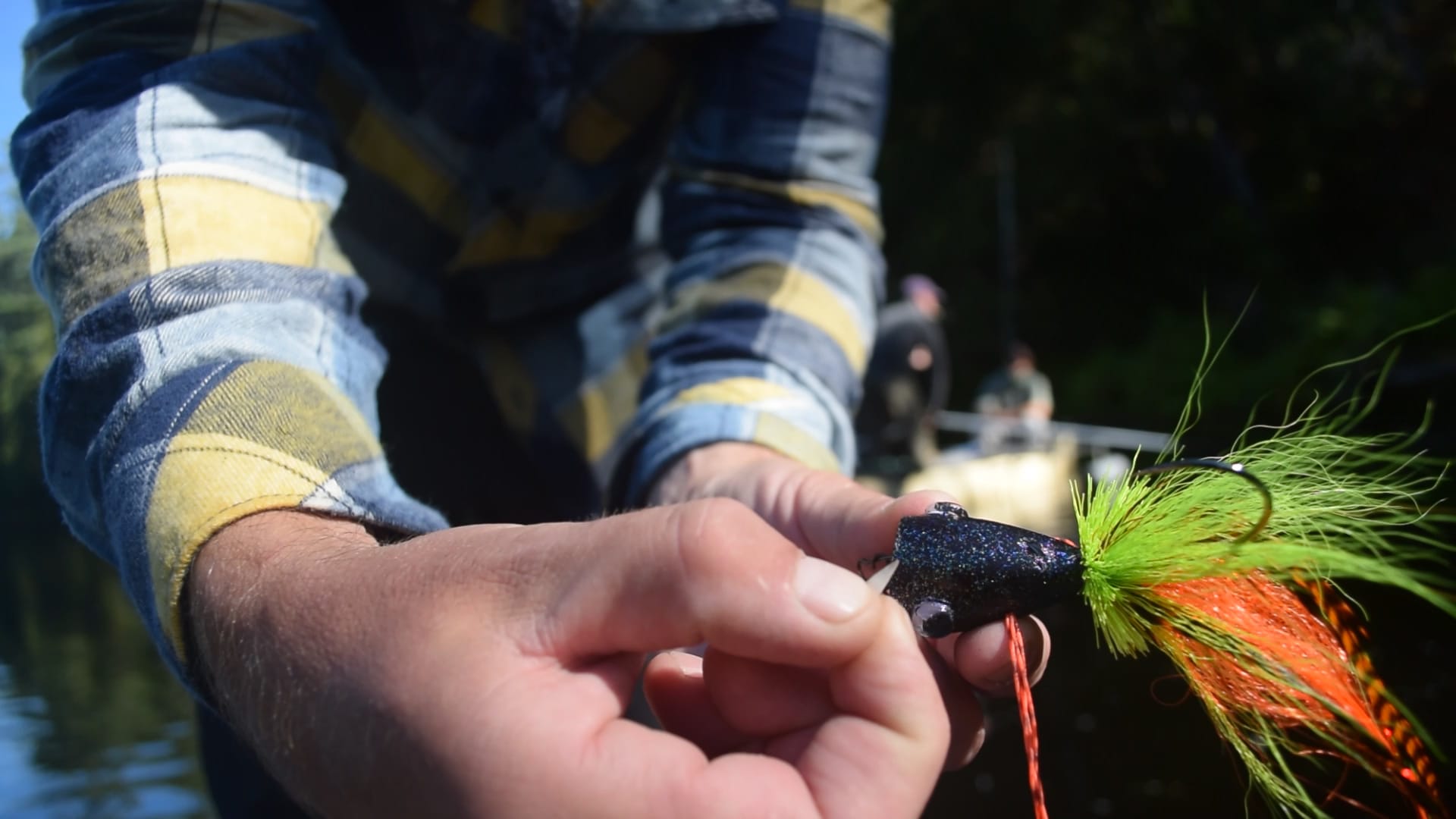
A little souvenir – a musky tooth embedded in a topwater fly
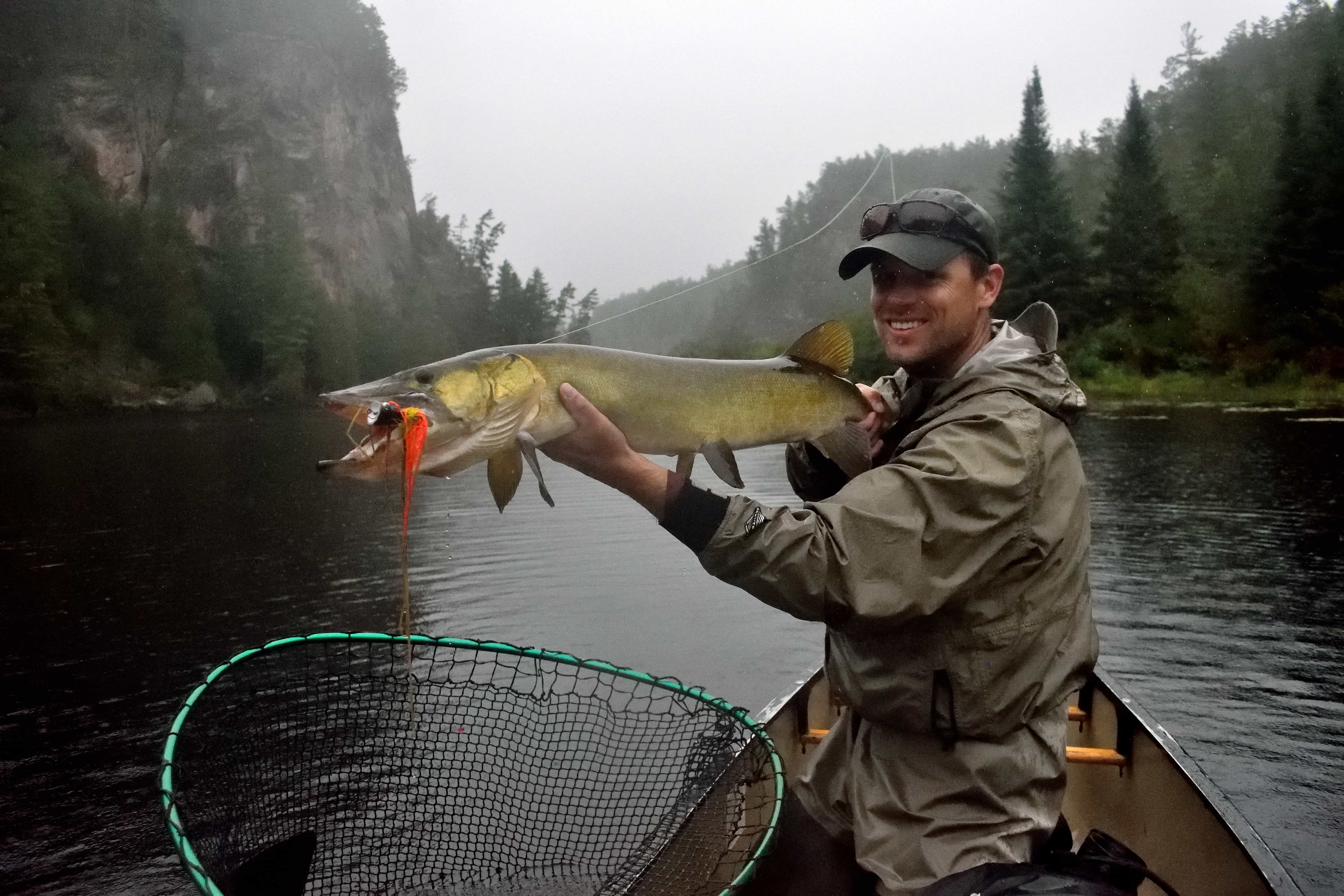
Another top water beast – 2 big ones from the same drift!
Packing it all up: Maintaining a snag free casting platform while ensuring efficiency during portages.
Notice that there are five distinct paragraphs leading up to this section. That’s how we binned our packing list. We rented four, 100L dry bags from the outfitter and filled them as follows: 2 x bags with clothes, waders, boots, hammocks, and rain flies – one bag per boat if you’re fishing with 4 anglers. 1 x bag with survival gear. 1 x bag with food. 1 x boat bag per boat with fishing equipment. Rods were either in hand, folded up in a rod carrier, or set up and stationed off the back of the canoe. If you do the math, each canoe had 2 anglers; 2, 100L boat bags; 2 rods that were set up (1 with sinking line and one with floating line); 2 rods that were stowed; 1 boat bag; and 2 PFDs. This created plenty of snag casting space in the bow for the angler and plenty of legroom for the angler on the oars. I told you planning for this was complicated!
Provisioning: a reliable outfitter with quality equipment will save you time and $$$
We rented boat bags, some safety equipment (we could’ve rented all of it but had much of our requirements already on hand), and canoes from our outfitter. The outfitter also provided the shuttle service. There is only one outfitter that services the area we fished: Algonquin Bound Outfitters. Click on this link for more details. They are extremely helpful and can help you plan a detailed packing list and itinerary.
The fishing: If you’re a musky head like us, there is no better place for numbers amidst incredible scenery.
I’ll let the pictures do most of the talking here but I will say one thing pictures can never show – these fish are voracious predators. Sure, musky are never easy to catch but in Algonquin, they are FAR EASIER than the norm. We boated 25 fish in 5.5 days and almost every fish took top water flies! Making matters even crazier is that we hooked very few of these fish on the first take. Nearly all of them would crash a fly, miss it, and keep coming back as if it was pissed off that the thing wasn’t dead yet. We had fish buttoned up, come off, and go right back after the fly as if feeling a sharp hook was some sort of defense mechanism of its prey. Some came back to the fly more than a half dozen times! REDICULOUS!. Enjoy the pics.
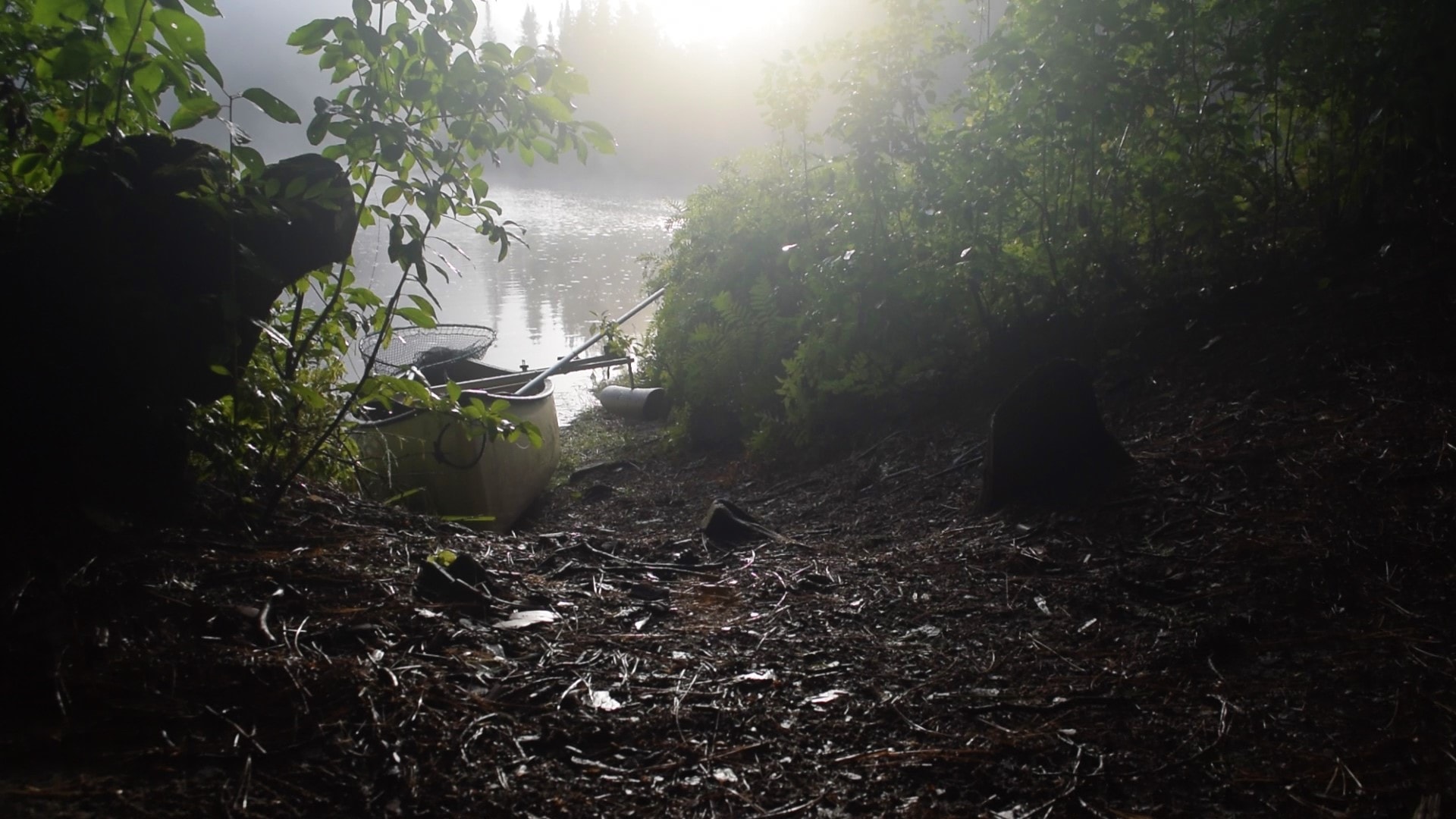
The primitive campsites were great!
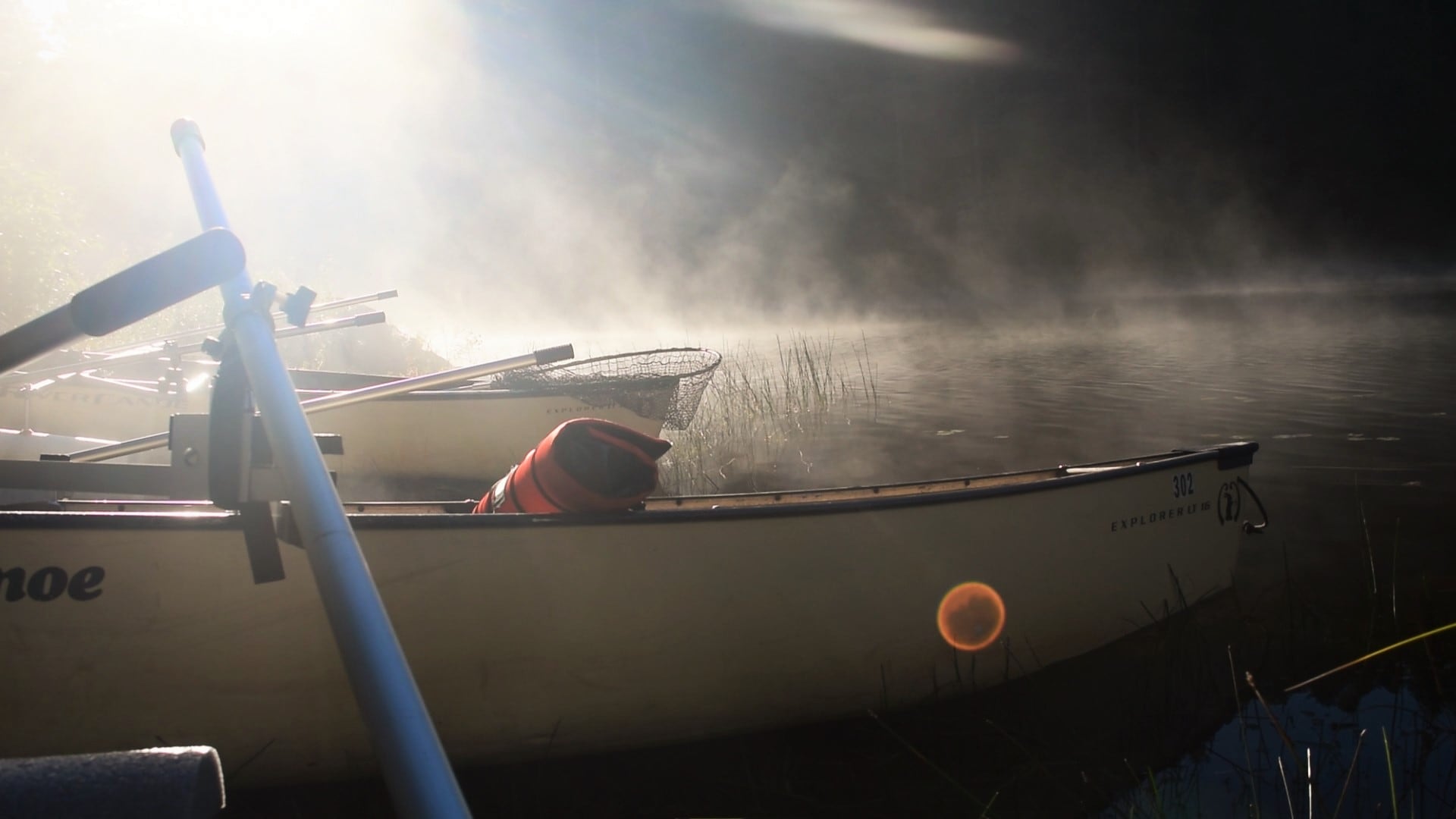
Getting ready for muskies in the mist

Yet another miCROski – you seeing a trend yet from my exploits? They were still beautiful though. And the takes!

Tony’s first ‘ski on the fly – his look of relief and bewilderment is classic!

The big fish of the trip – one of the few taken from deep water on a streamer
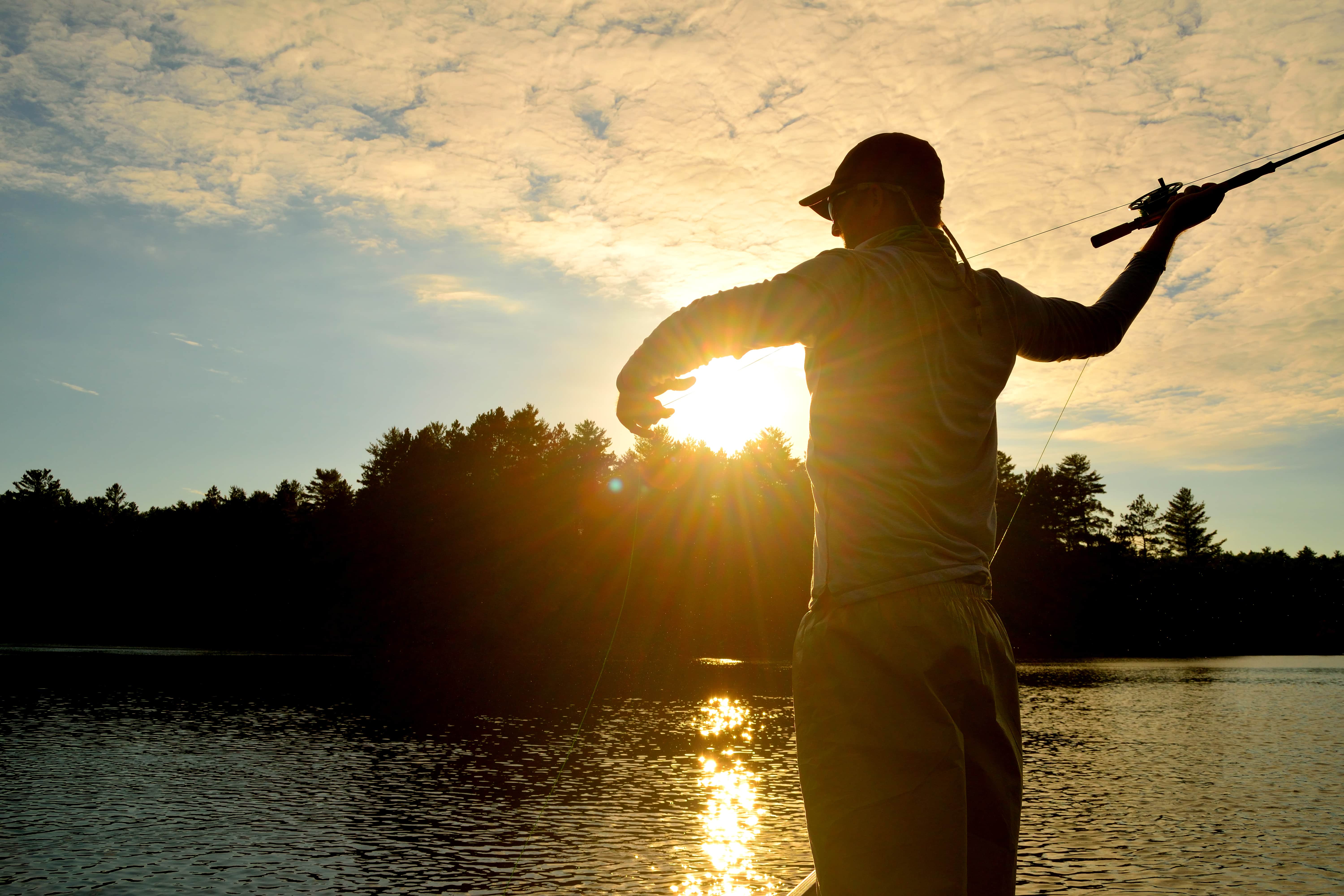
Tony casting into the dusk
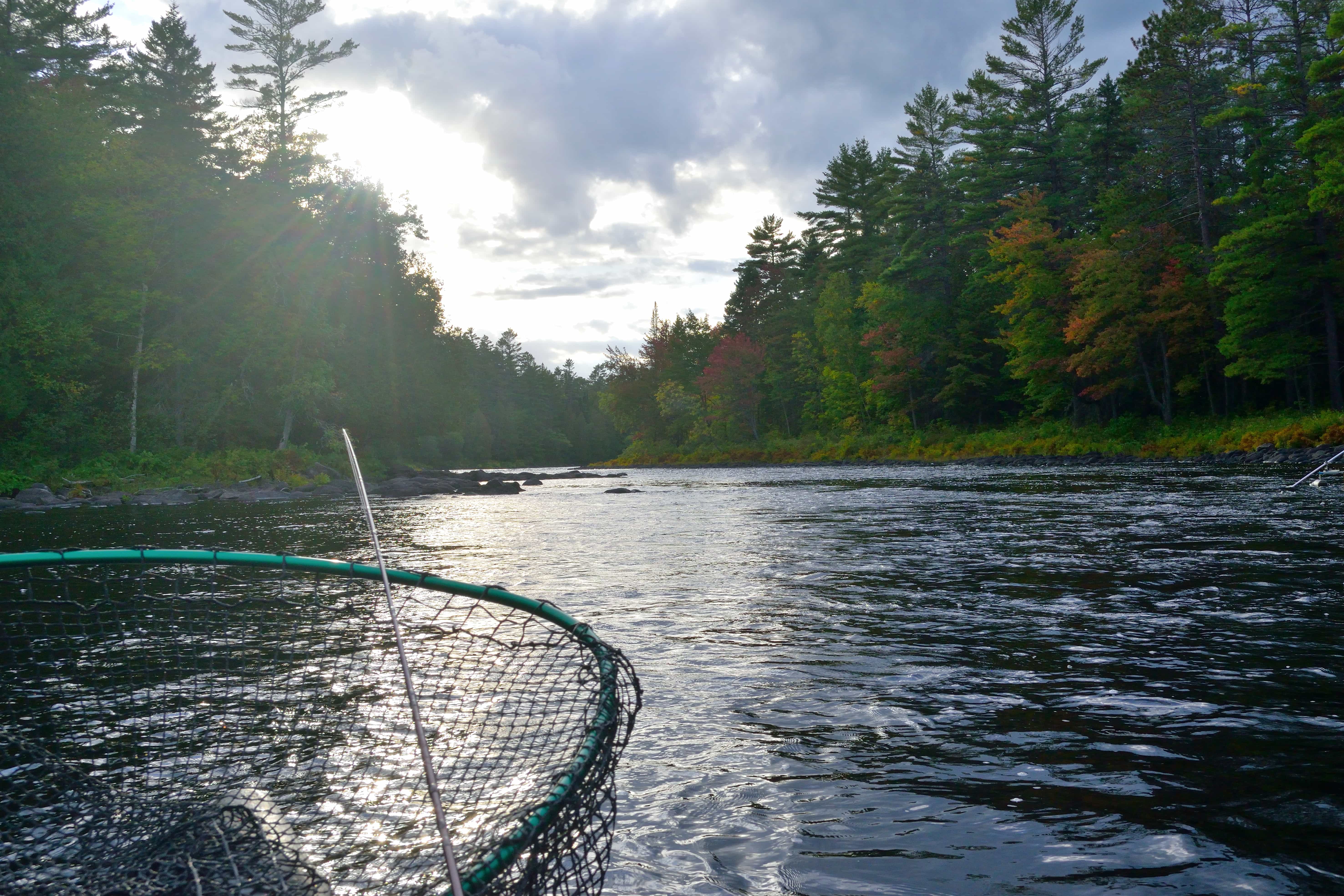
Another downstream shot – take note of the placement of the net and additional rod
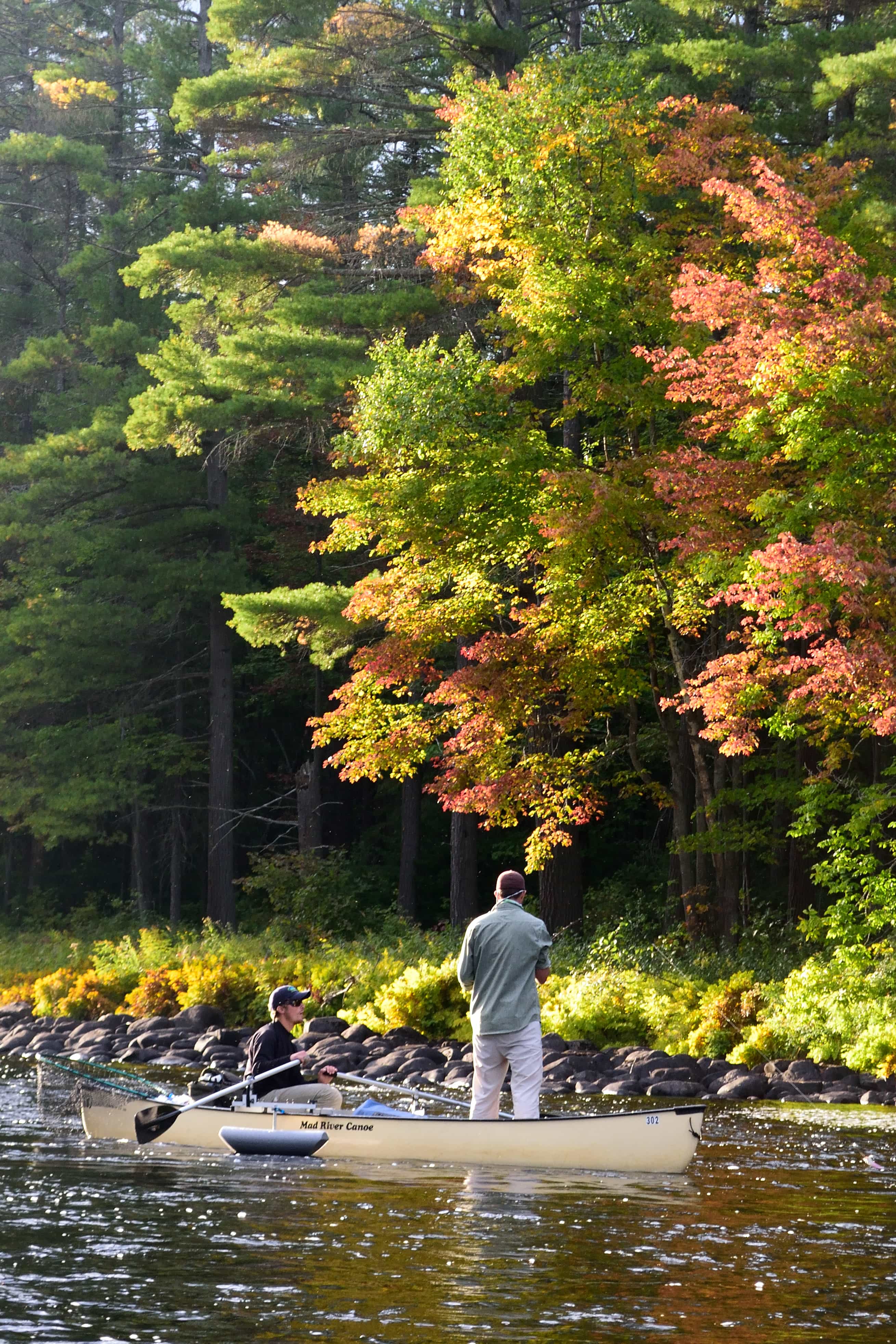
A little fall foliage as a backdrop to some epic fishing
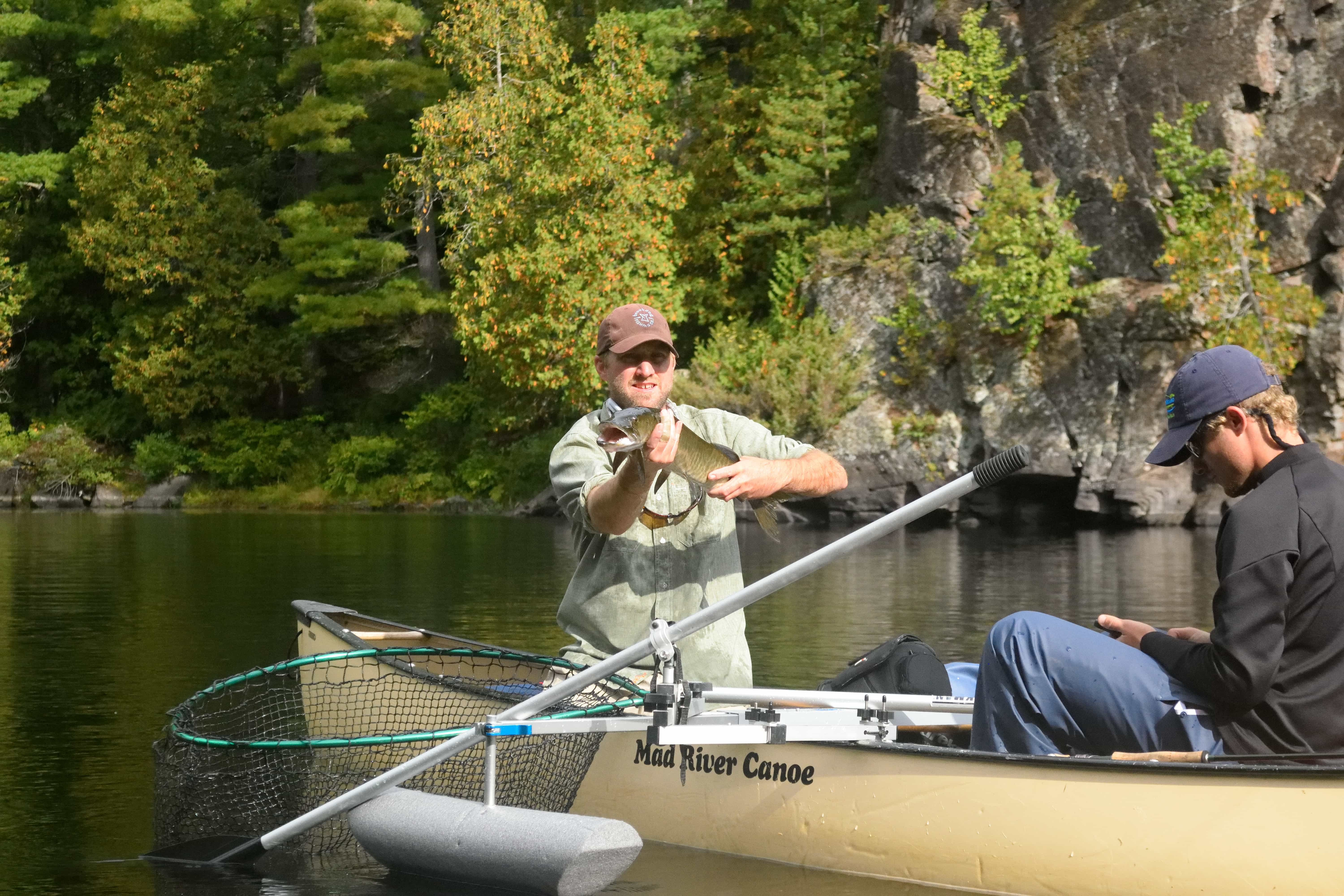
Tony posing for the shot – take note of how much space he has in the front of the canoe
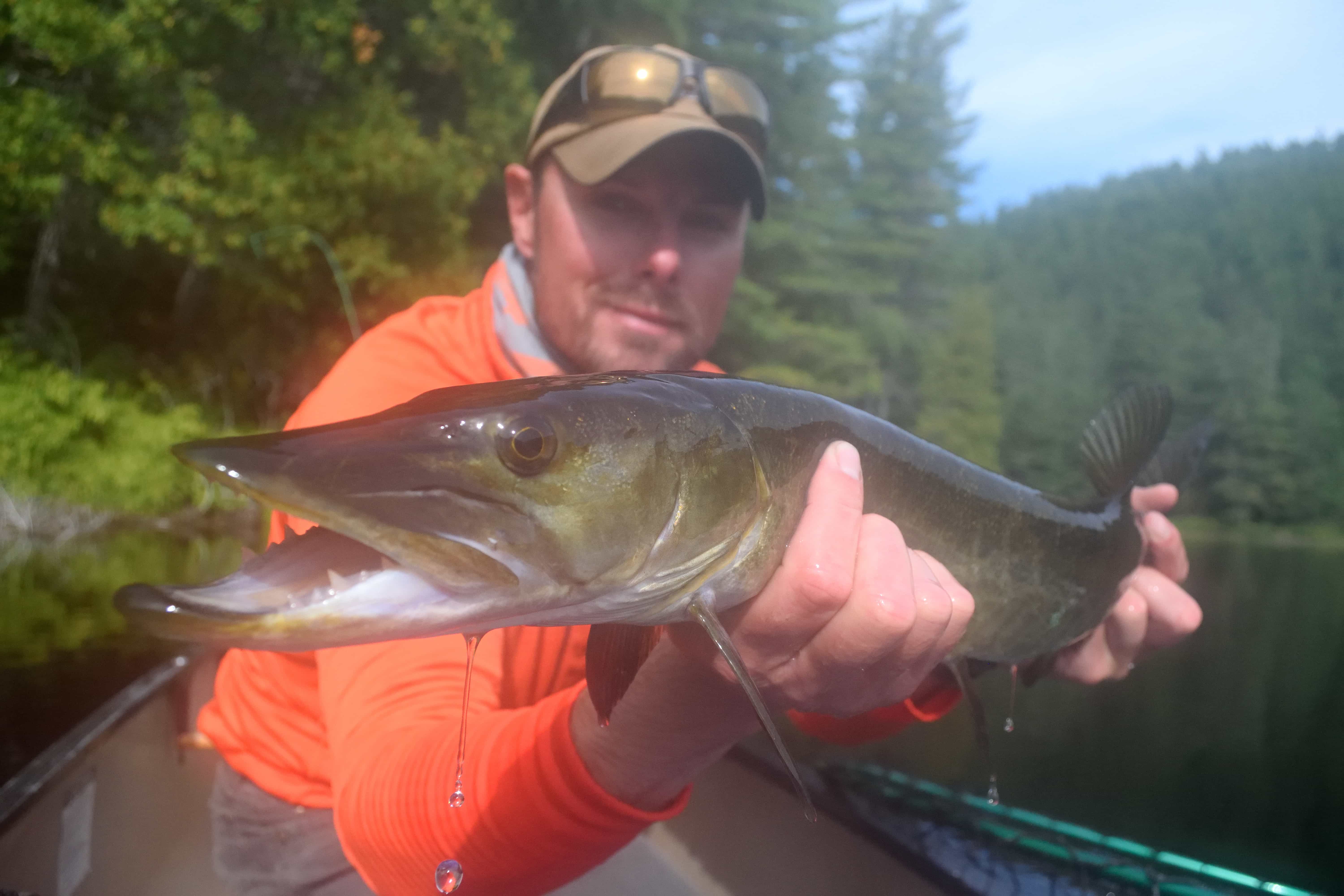
Me with a miCROski – I couldn’t keep the little guys away from my fly
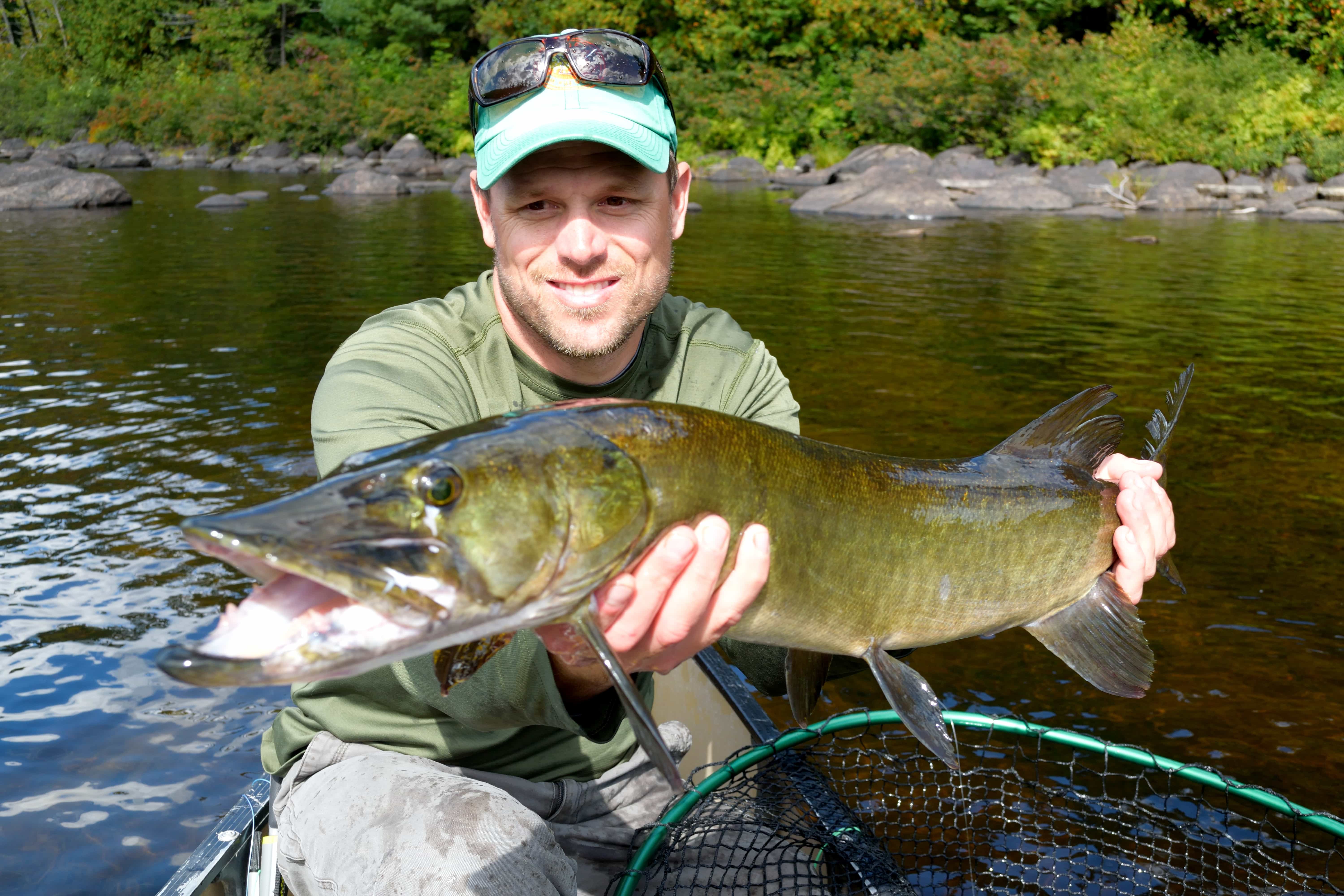
Look at that smile! It’s as if the fish knew it was posing for the camera
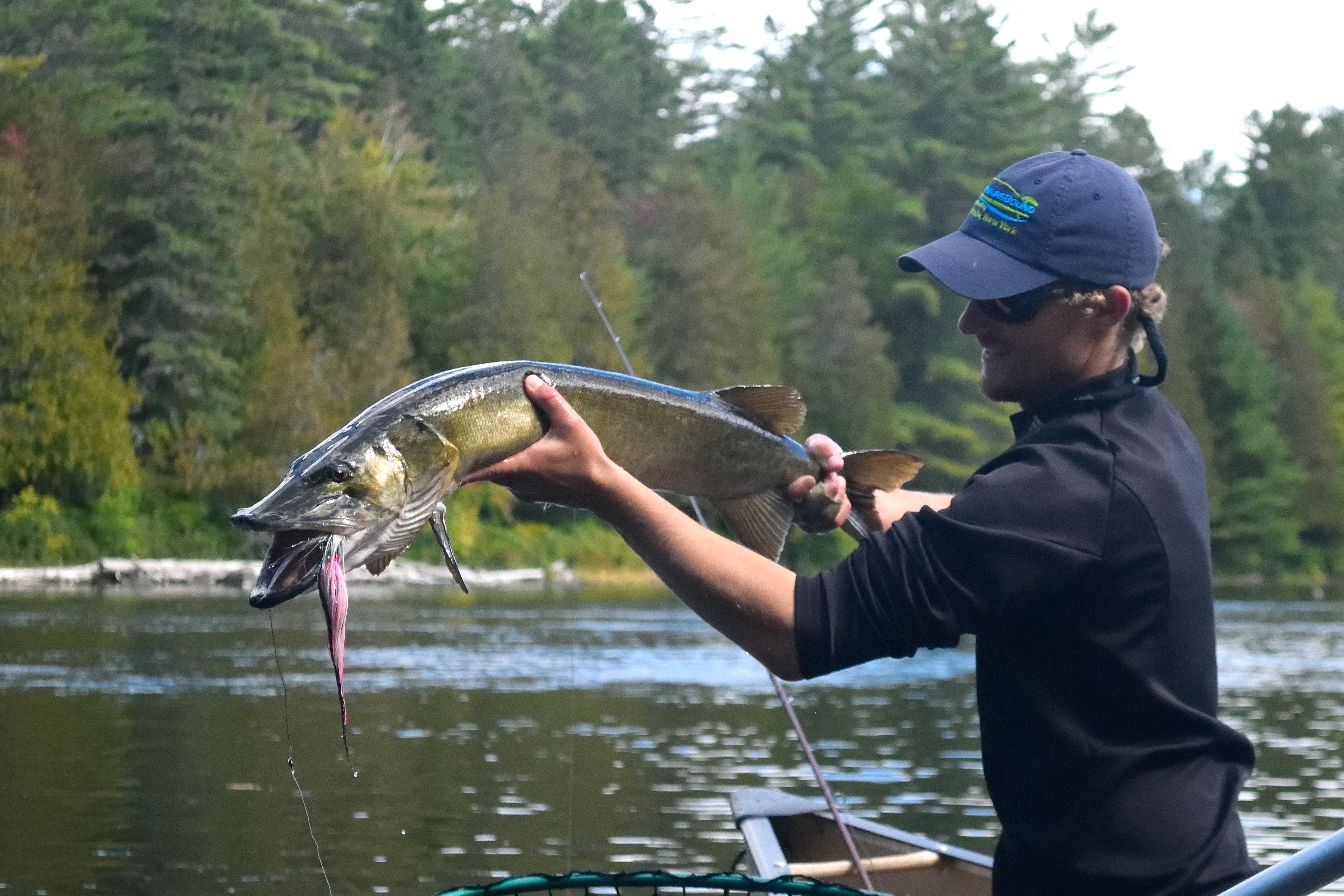
Look at how beautiful this guy is. The fish, of course. Nick’s not too shabby himself
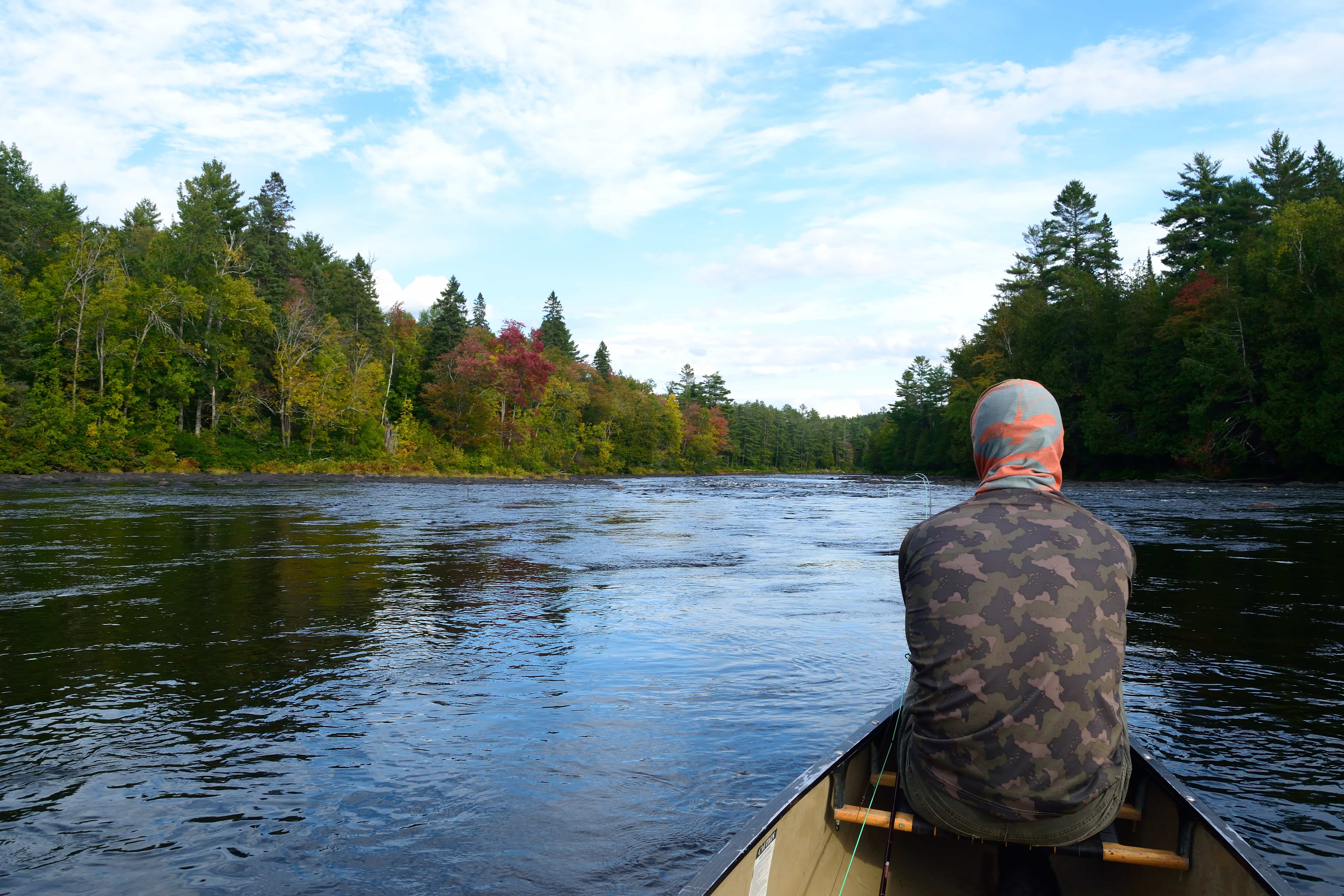
Taking it all in before shooting a rapid

Me with yet another miCROski

Figure 8s were key as those fish kept coming back for more – Nick making it happen rain or shine

One of Nate’s topwater skis – look at that background too

Grease flowing through conifers

The net is alway at the ready

Nick with one if his first studs
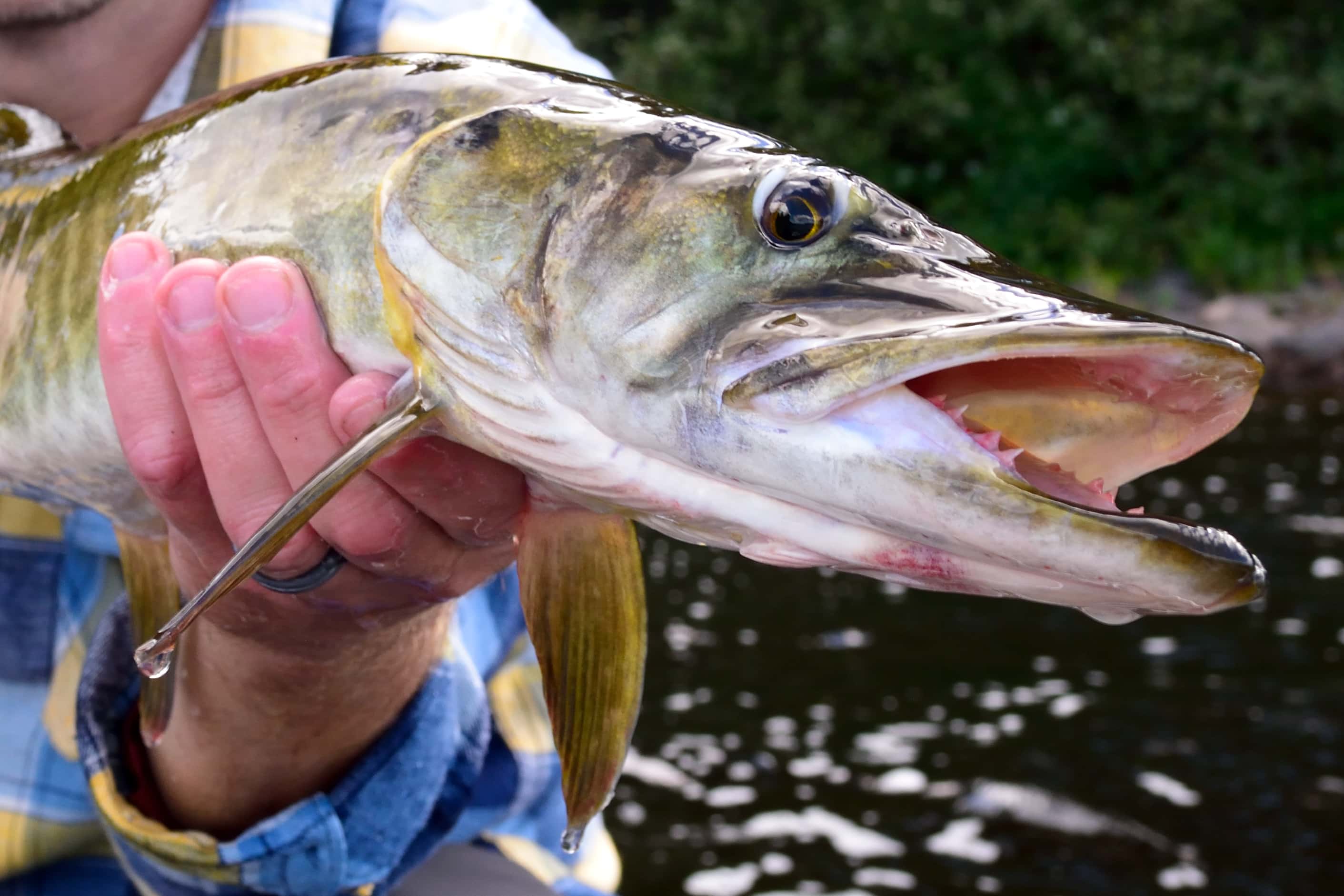
We got into them almost immediately


Nate with an Algonquin stud

View from one of 5 campsites

The beauty never ceases

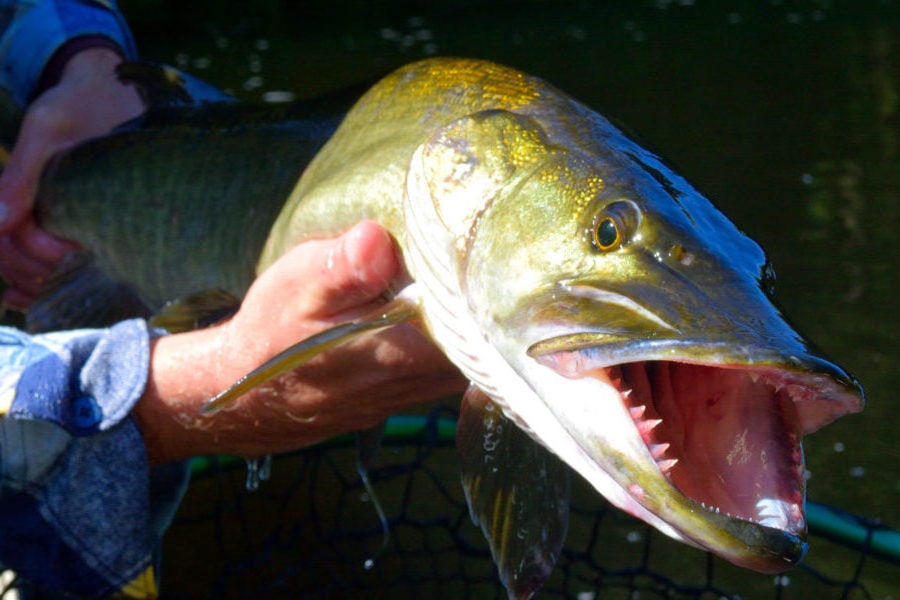
We are headed up to Ceder Lake this August, I noticed Ceder has Musky – I know you are keeping this particular location under the cuff – but were you guys close to Ceder?? We did Booth last year and hammered the pike! Thanks for the help (bbridc@gmail.com) if that’s easier – Thanks!